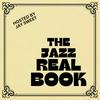138 episodes

Eighty One and Ron Carter
04/1/2026 | 20 mins.
“Eighty-One” and Ron Carter (105) Standards Rating 5: Difficulty Rating : 6“Eighty-One” is a 24-bar tune with a 12-bar A section and a 12-bar bridge, written in F and first recorded on E.S.P. (1965). Though credited in The Real Book to Miles Davis/Ron Carter, the piece is widely regarded as Carter’s, and it reflects his expanding role in the Second Great Quintet. Carter’s concept—shaped by intervallic thinking, pedal points, and harmonic ambiguity—defines the tune’s character. The chart’s instruction to play even eighth notes places it firmly in a post-bop context, prioritizing articulation and interaction over swing’s triplet lilt.The melody is spare and rhythmically precise, using quarter-note triplets, unexpected pickups, and extended rests to make space a compositional element. Harmonically, the near-constant use of 9sus4 voicings—avoiding the third—creates an open, floating soundscape.. “Eighty-One” stands as a concise statement of Carter’s modern jazz language: economical, flexible, and deeply interactive.Ron Carter Bill FrisellJazz Real Book Playlist Vol. 2

Sullivan Fortner Interview
02/1/2026 | 1h 2 mins.
Sullivan Fortner’s 2025 stands as a defining chapter in an already remarkable career. The year brought a Grammy nomination for Southern Nights, a live-in-the-moment trio recording born from a spontaneous Village Vanguard engagement, captured in a single four-hour studio session. Alongside it came high-profile collaborations with Theo Croker, Kurt Elling, and Lauren Henderson, each revealing different facets of Fortner’s musical identity—from free-form duo exploration to intimate vocal-piano dialogue. The year’s biggest surprise was his selection as the first-ever jazz recipient of the Larry J. Bell Jazz Artist Award, a historic honor accompanied by a $300,000 prize. Grounded in gospel roots, shaped at NOCA and Oberlin, and refined through formative years with Roy Hargrove, Fortner embodies a lineage-driven approach that values listening, intuition, and trust. Despite the accolades, his perspective remains modest and forward-looking, focused on the music itself—and on what comes next.

Ecclusiastics and Charles Mingus
28/12/2025 | 17 mins.
“Ecclusiastics” and Charles Mingus (104) Standards Rating 2, Difficulty Rating 7 “Ecclusiastics” offers a concentrated portrait of Charles Mingus’s artistic personality: volatile, spiritual, blues-soaked, and uncompromising. Drawing its title from the Jewish wisdom text attributed to Ben Sira, the piece reflects Mingus’s lifelong engagement with moral struggle, Black church traditions, and personal prophecy. Marked at an extremely slow ♩ = 52, the tune demands patience and emotional control, qualities Mingus valued deeply in his musicians. Its unusual ABC form, shifting meters, and harmonically restless language mirror his resistance to standardized jazz structures. On Oh Yeah (1962), Mingus performs on piano and vocalizes freely, calling out and humming like a preacher mid-sermon. This blurring of composition, improvisation, and embodied expression exemplifies his belief that jazz should confront, instruct, and testify. “Ecclusiastics” ultimately functions as both composition and sermon—an extension of Mingus’s artistic will.Charles Mingus Mingus Big Band Spotify Playlist #2

Easy To Love and Gene Ammons
21/12/2025 | 24 mins.
“Easy To Love and Gene Ammons” (103)Standards Rating 7, Difficulty Rating 5 “Easy to Love” is a model of Cole Porter’s understated brilliance: a 32-bar form with a spacious, lyrical melody and harmonies that move fluidly through ii–V progressions and subtle chromatic color. Its clarity and emotional openness have made it a durable jazz standard, adaptable to ballad, swing, or groove-based treatments without losing its essential elegance. On Jug (1961), Gene Ammons reshapes the tune through a relaxed boogaloo feel, grounding Porter’s refinement in blues and rhythm. Ammons’ massive tenor sound, shaped by his Chicago roots and early work with Billy Eckstine’s band, favors melody, warmth, and direct communication. Despite career interruptions caused by incarceration, he remained one of Prestige Records’ most influential voices, bridging bebop sophistication and soul-jazz accessibility. His “Easy to Love” reflects that legacy perfectly—honoring the song’s structure while infusing it with groove, humanity, and unmistakable personal voice.Gene Ammons Ella Fitzgerald Spotify Playlist #2

John Goldsby Interview
18/12/2025 | 1h 17 mins.
John Goldsby (b. December 10, 1958) is an American jazz bassist, composer, author, and educator, best known for his long tenure with the Grammy-winning WDR Big Band in Cologne, Germany, which he joined in 1994. Raised in Louisville, Kentucky, the son of a Baptist minister, he played several instruments before committing to the double bass at age 18. Early professional work with visiting jazz greats led him to New York City in 1980, where he spent 14 years performing and recording with artists including Michael Brecker, Mel Lewis, Toshiko Akiyoshi, and the American Jazz Orchestra. Goldsby has released numerous recordings as a leader and sideman, spanning small-group jazz to large-scale big band projects. A highly respected educator, he teaches at the Maastricht Conservatory and has presented masterclasses worldwide. He is the author of The Jazz Bass Book and other influential texts, and is widely regarded as a leading authority on jazz bass tradition and technique. Big Band Bass, released November 7, 2025 on Bass Lion Publishing, marks his 30th anniversary with the WDR Big Band, featuring eight original compositions and arrangements by Bob Mintzer, Michael Abene, Dave Horler, and Vince Mendoza. Through his extensive writings and, of course, his bass playing, Goldsby personally helped introduce me to the lineage of great bass players and the enduring tradition of jazz bass performance.
More Music podcasts
Trending Music podcasts
About The Jazz Real Book
Listen to The Jazz Real Book, Song Exploder and many other podcasts from around the world with the radio.net app

Get the free radio.net app
- Stations and podcasts to bookmark
- Stream via Wi-Fi or Bluetooth
- Supports Carplay & Android Auto
- Many other app features
Get the free radio.net app
- Stations and podcasts to bookmark
- Stream via Wi-Fi or Bluetooth
- Supports Carplay & Android Auto
- Many other app features


The Jazz Real Book
download the app,
start listening.







































